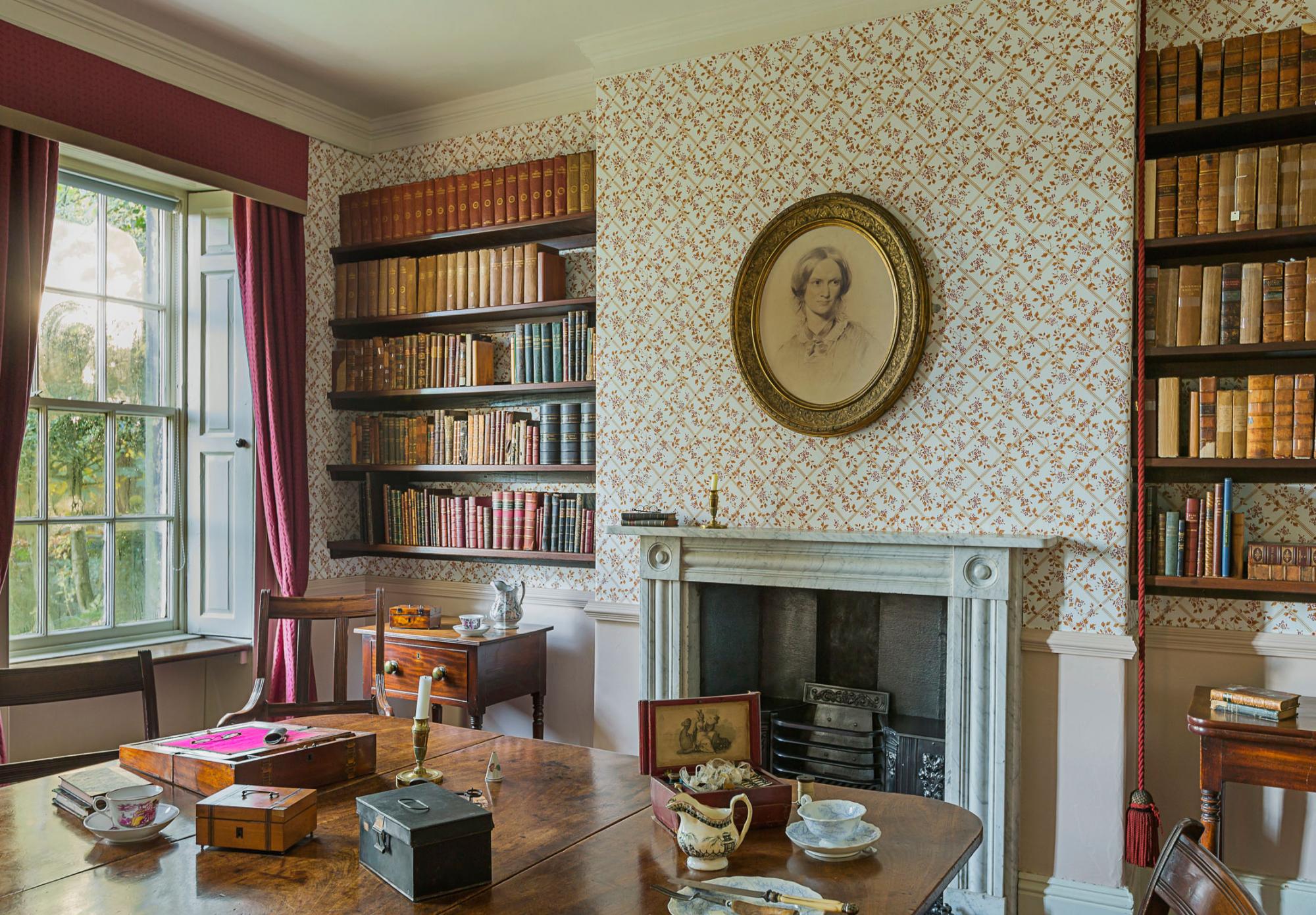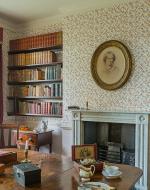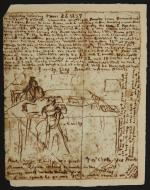Created by Sadie Radka on Sun, 11/08/2020 - 17:31
Description:
Also known as the lap desk, writing slope, writing box, or writing cabinet, the portable writing desk originated in the 17th century, intended to carry everything necessary for a man’s correspondence yet be small enough to carry with him on his horse. The interior of the Victorian version is sloped and covered in a fabric, like leather (for men) or velvet (for women), with surfaces that lift up, revealing space underneath for writing supplies. The back of the desk has compartments for writing utensils, curved so that they could be easily removed and replaced. The walls of these compartments are often stained with ink from use. With the heightened methods and need for communication in the Victorian era came the need to have letters travel faster and be kept safer, so secret compartments in the writing desk were not rarities. Each of the Brontë sisters had a writing desk.
The Room Where It Happened (The Dining Room/Drawing Room/Parlour), Haworth Parsonage Museum, Haworth, UK.
Depicted here is the parlor in Haworth Parsonage where the Brontë sisters discussed and wrote their works. Charlotte Brontë’s good friend and eventual biographer Elizabeth Gaskell, upon her visitation in 1853, noted just how warm and inviting the room was, particularly in contrast with the gloomy moors outside. She also commented on the “‘neatness and cleanliness’” of the room as a whole, as well as ‘“the crimson predominating in the furniture’” (qtd. in Miller, "Writers' Rooms"). A portrait of the eldest surviving sister Charlotte, who by this point had become a bit of a literary celebrity, can be seen hanging above the fireplace.
Image: Justin Paget, 2020 | Country Life; https://www.theguardian.com/books/2008/jul/04/writers.rooms.charlotte.bronte#_
Emily Brontë's Writing Desk, Haworth Parsonage Museum, Haworth, UK.
Here we see Emily Brontë's writing desk and its contents, kept at the Haworth Parsonage Museum. There is one official document, perhaps a certificate of some kind, written in French. It also appears that one of the envelopes has "Ellis Belle, Esq." written on it in what may be Emily's hand. Additionally, there is a quill pen and a sheet of thick paper stained with ink. "Emily" is written on the envelope perched upright, with Haworth written underneath.
Also kept in Emily's writing desk were "Clark's Enigmatic and Puzzle Wafers" and some red wax seals. There are two of these seals pressed on a small piece of paper with the words "Made by Emily Brontë" written in what I assume is also her hand.
The following excerpt from Deborah Lutz’s The Brontë Cabinet illuminates Emily's desk:
“Emily likely stored her poetry scraps and notebooks in her portable desk, along with letters, stationery, seals, ink, and metal nibs—all of the latter were found there after her death. The desk locked, and she may have kept it that way, with a key she carried on her person. All three of the Brontë sisters had these portable writing desks . . . Branwell must have had one too, bigger than his sisters’—women’s desks were made more ‘delicate’ than men’s—but it has not been located. Emily called them ‘desk boxes,’ as in her 1841 diary paper, which begins, ‘It is Friday evening, near 9 o’clock—wild rainy weather. I am seated in the dining-room, having just concluded tidying our desk boxes, writing this document.’
On the page next to her writing, Emily sometimes drew portraits of herself using her banged-up rosewood desk, her sheet (the one she was actually writing on just then, visibly pictured) propped on the ink-stained, purple velvet that covers the writing slope. When closed, the desks became rectangular cases, not much larger than shoeboxes. Divided on a slant and hinged together, when opened the lid and bottom lay flat, forming a continuous sloped surface for writing and reading. Even when unfolded, the desks were small, so they were sometimes called lap desks, although they were also known as table desks” (159-60).
Image: @BronteParsonage, 2018 | Twitter; https://lithub.com/the-bronte-cabinet/
Emily Brontë's Diary Entry, 1837, Haworth Parsonage Museum, Haworth, UK.
This is a photo of one of Emily Brontë’s diary entries dated June 26, 1837, something she most likely kept in her writing desk. She briefly describes what is going on around her, and then records a poem sheand Anne wrote together about their fictional world of Gondal. Below the text is a sketch Emily drew of herself and Anne (positioned farther away) sitting at the table. If you look closely, you can see that Emily drew her "Writing Box" and labeled it as such.
What I find really interesting about this diary entry is Emily’s handwriting. It is incredibly tiny yet legible, much like Charlotte’s tiny books. I did find, however, that this was not Emily’s prettiest hand. Whereas the diary entries are more sprawled and uneven, the written poetry is beautiful and perfectly done. This could be because of the medium of writing or perhaps Emily intended for her poetic works to be published.
Image: The Brontë Parsonage Museum | British Library
https://www.bl.uk/collection-items/emily-brontes-diary-1837




